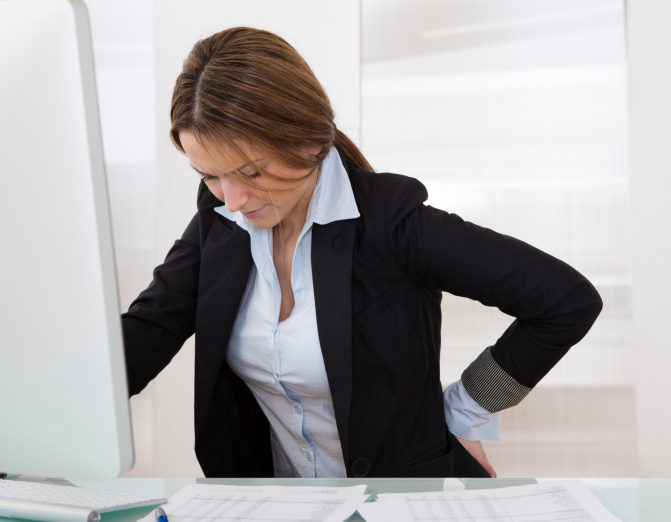How can poor posture can affect your back health?
Back injuries can be not only be dreadfully debilitating, but they can also be permanent without proper treatment making prevention the best course of action. At PhysioWellbeing, we find that many back injuries are associated with sports and improper lifting practices and, although these are a few main culprits when it comes to back pain, another very common cause is poor posture.
People who live sedentary lifestyles often assume that their lack of physical activity makes them at lower risk for back problems than someone who is vigorously active on a regular basis; this could not be further from the truth. However, postural assessments can help to identify problems that you’re currently having with your back, as well as outlining how to improve your posture and in turn, reduce back pain.
Your Back
A healthy back has three natural curves; the lumbar curve, which is an inward curve in the lower back; the cervical curve, located in the neck; and the thoracic curve, which is an outward curve located in the upper back. Poor posture over time will put physical stress on not only the curvature of your back, but your muscles as well, causing them to pull and/or strain. This strain can in some cases be irreversible if not tended to promptly.
Proper Sitting Posture
Remember when your mother used to tell you to sit up straight and stop slouching? Well, if you have back pain that you can’t attribute to an injury then it’s more than likely that you should have listened to your mother after all. One of the worst things you can do to your back is slouch while sitting, you may think that this is more comfortable but your back disagrees, and sooner or later it will let you know it.
People who work in an office are at very high risk for posture related back problems. Although most offices provide ergonomically correct chairs, more often than not people are not sitting in them properly.
So, to combat this, here’s how you can improve your seating posture. Let’s start with the feet; keep them flat on the floor and allow your knees to be comfortably level with your hips – using a footstool can help if the height of the chair makes this difficult. Sit back in your chair; although you may have the urge to lean forward at your desk this is actually causing severe strain to your back muscles. Placing a small pillow behind your lower back area is a great way to encourage your body to sit back naturally and stay comfortably straight.
Proper Standing Posture
Standing up straight not only looks better and displays confidence it is also good for your back health. For people who work in a field where standing is common practice, whether it be factory work or a cashier for example, poor standing posture can take its toll on your back after a prolonged amount of time so it is important to be mindful of your standing posture.
When standing, your shoulders should be back yet relaxed at all times. Keep your feet approximately hip distance apart and make sure that your weight is balanced evenly on both feet whilst allowing your hands to hang naturally at your sides when you can. Pulling in your abdomen and avoiding tilting your head is also an excellent habit to get into.
Putting an End To Poor Posture Habits
Proper posture is supposed to feel natural, but if you have been practising poor posture for a length of time, correct posture can feel awkward or even stiffening at first. The only way to alleviate this is to commit to maintaining good posture every day, and in time it will start to feel natural and you’ll become very appreciative for it!




